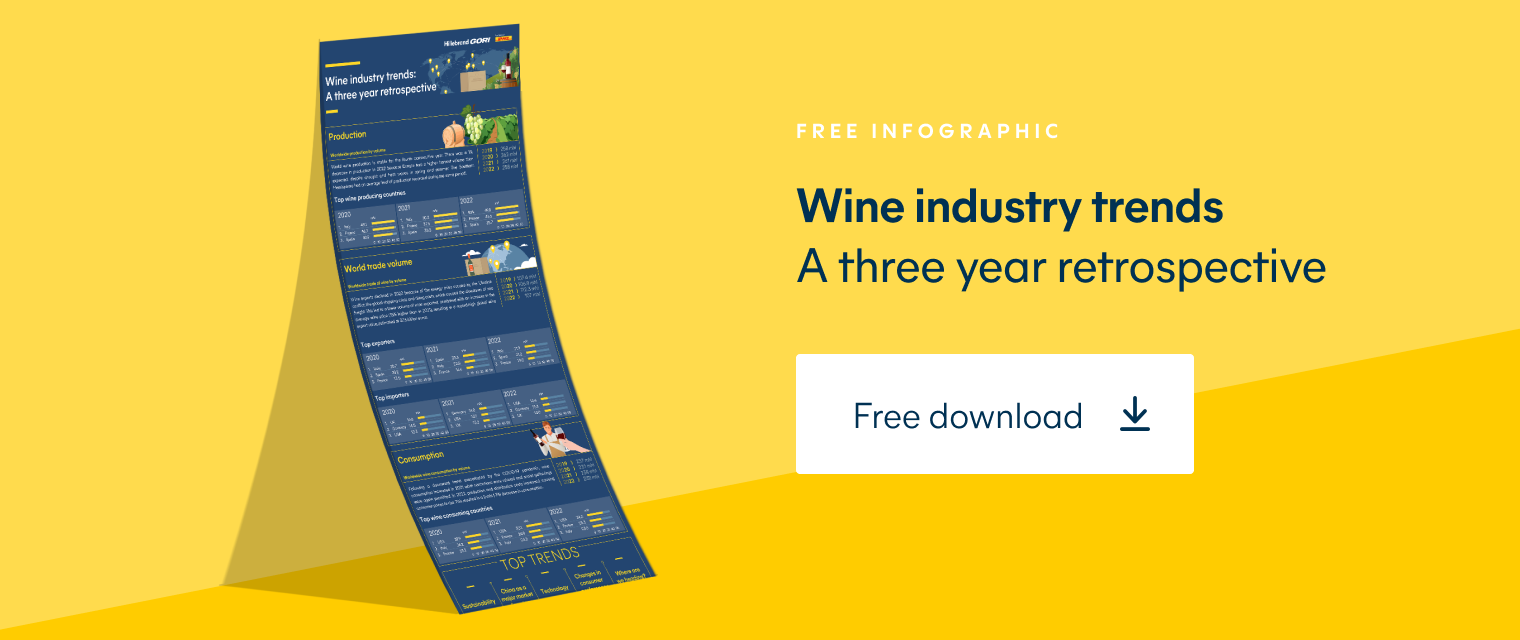ISPM 15: what you should know as a wine importation business
Table of contents
Wine importation is an exciting field to work in, with the opportunity to learn about different wine regions and try new, interesting wines and grape varieties. Working with wineries, wine importers can make these wines available for consumers around the world. Understanding both your consumers and market is often key to choosing your collection, but there are import rules and regulations to contend with too. So what do you need to know to get started?
How do wine importers work?
In most cases, wine must be transported from the winery to another location where it will be enjoyed. Importing wine is a multi-step process.
As a wine importation business you will source, taste and select wines to import based on the consumption market you are in. After choosing your wines, the next step is to tell the winery the quantity of each wine you want to import and how you want to receive it. Once you have agreed on a quantity of wine, its packaging, labelling and palletising, you are ready to take this agreement to a freight forwarder. The freight forwarder will arrange the right shipping carrier service based on the quantity, time scale and other information provided.
Things you should be aware of as a wine importation business
Alongside an expert understanding of your wines and market, a successful wine importer must contend with the logistics of importing wine too. This might bring to mind taxes, duties, customs forms, making arrangements with the supplier and choosing a freight forwarder.
While these are all crucial, phytosanitary (plant health) regulations are an inescapable part of shipping and importing wine too. So what do you need to know about biosecurity as a wine importation business?
What is ISPM 15?
ISPM 15 is an international standard for wooden pallets that sets out the need to treat wooden pallets and other wooden packaging used in shipping or stowing cargo. It is designed to tackle the spread of wood and plant pests that may pose a biosecurity risk.
How can my business comply with ISPM 15?
As a wine importation business, you should use pallets that are ISPM 15 compliant. ISPM 15 compliant pallets will have an internationally recognised mark:
This mark certifies that the pallet has been treated with one of two methods:
- Heat treated to a minimum core temperature of 56°C/132.8°F for a minimum of 30 minutes.
- Fumigated using Methyl Bromide (MB) to the specified dosage and temperature.
The pallet must also be clearly marked on 2 faces showing:
- The official IPPC logo
- A 2 letter country code
- A unique number assigned by the National Plant Protection Organization (NPPO),
- ‘HT’ for Heat Treatment or ‘MB’ for Methyl Bromide, depending on which method has been used.
- ‘DB’ to signify it has been debarked.
What countries are signed up to ISPM 15?
Since the FAO adopted these measures in 2002, countries can now decide to implement these internationally recognized regulations. Countries that are participating in ISPM 15 are:
|
|
What is the brown marmorated stink bug and how does it affect my wine importation business?
One of the insects that ISPM 15 aims to tackle is the brown marmorated stink bug (BMSB), which is transmitted between countries through the wooden pallets used in shipping.
Every year, biosecurity measures are put in place for the BMSB season. Native to China, Japan and Korea, these insects are active during the summer when they pierce the skin of fruits and vegetables to get to the juice within. The spots and blemishes left behind can make the food inedible or unsellable.
How does this apply to my wine importation business?
For any wine importation business, it’s important to be aware that from approximately September to April, imports to Australia and New Zealand must be treated prior to arrival at port and into Australian or New Zealand territory. However, shipping containers that are only carrying wine, beer or spirits are not affected, with the exception of Australian imports containing point-of-sale goods. In this case, the whole container must be fumigated, either before departure or on arrival.
If you are importing wine from Italy to New Zealand, an MPI supervised unpack is required. This applies to all sea containers. Find out more about requirements for wine importers to New Zealand here. All of these biosecurity measures come at extra cost, so it’s important to factor these into your budget. Equally, if you transport or import beverages on an untreated pallet, your shipment can be rejected by the import country’s customs authorities. The wine producer may also be fined.
As well as having an impact on wine importation business shipments, BMSBs can also directly affect wine production. If the grapes ground to make wine contain stink bugs, this can result in the entire crop needing to be thrown away.
Wine importers will also need to be aware of the restrictions around reusing and repairing wood packing and pallets. Research any restrictions that may affect the return or exchange of certain pallet types before your shipment reaches its destination. Pallets may not be suitable for reuse, or they may need to be re-treated or remarked.
Pallet sizes
ISPM 15 regulations mean your wine importation business must use approved pallets, but it's also important to understand the pallet sizes available, and how many can fit in a container. There are several sets of standardized pallet sizes available in international shipping, including:
Euro pallets
- Standard size: 120 x 80 cm / 31.5 x 47.24 in
- Empty weight: 25 kg
- Mostly used for European shipments.
- 11 pallets in a 20-foot dry container
- 10 pallets in a 20-foot reefer container
- 24 pallets in a 40-foot dry container
- 23 pallets in a 40-foot reefer container
VMF block pallet
- Standard size: 120 x 100 cm / 39.37 x 47.24 in
- Empty weight: 28-30 kg (varies by wood size/type)
- Commonly used anywhere in the world.
- 10 pallets in a 20-foot dry container
- 9 pallets in a 20-foot reefer container
- 21 pallets in a 40-foot dry container
- 20 pallets in a 40-foot reefer container
“GMA” pallets
- Standard size: 48 x 40 in
- Empty weight: 16kg+ (varies by wood size/type)
- Mainly used in North America
- 10 pallets in a 20-foot dry container
- 9 pallets in a 20-foot reefer container
- 21 pallets in a 40-foot dry container
- 20 pallets in a 40-foot reefer container
Take the stress out of running a wine importation business with the help of a specialist freight forwarder
We can help you navigate shipping regulations and find alternative solutions where appropriate. For example, for air freight and some other types of transport, “light” plastic pallets are one option.
If you’d like to know more about how ISPM 15 or the BMSB season might impact your wine importation business, contact your local Hillebrand Gori office for more information.
Published 24th March 2023, updated 28th November 2023
Importing wine can be a complex process involving several parties in the supply chain. You need to obtain the necessary licenses and permits for importing alcohol and find reliable suppliers, then negotiate prices and terms of delivery, and arrange for transportation of the wine to your destination country.
The International Plant Protection Convention (IPPC) developed ISPM 15 to address concerns about spreading pests through wooden packaging materials. Many countries globally have widely adopted and enforced this regulation.
New Zealand was the first country to adopt ISPM 15 in 2003. Australia followed in 2004, and the European Union adopted it in 2005.
No. ISPM 15 doesn't encompass all types of wooden pallets. It only applies to those used for international shipping, as they pose a higher risk of spreading pests. Pallets intended for domestic use within a country are exempt from this requirement. Additionally, ISPM 15 doesn't apply to plastic or metal pallets.





